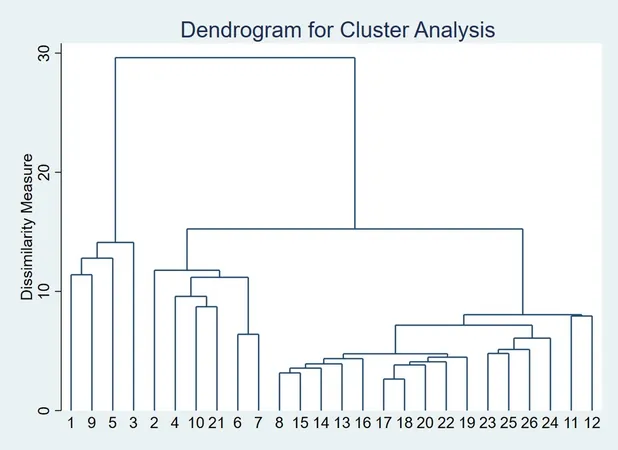
Unmasking the Hidden Health Crisis: Lymphatic Filariasis Patients Grapple with Multiple Conditions in Odisha
2025-07-05
Author: Yu
A Growing Concern in Public Health
The dual burden of chronic infectious diseases and rising non-communicable diseases (NCDs) is increasingly alarming, particularly in low- and middle-income countries (LMICs). Lymphatic filariasis (LF), a neglected tropical disease, exemplifies this issue, greatly impacting those in poverty as it overlaps with serious health complications, leading to long-term disability.
The Extent of the Problem
South Asia houses nearly half of the world’s lymphatic filariasis cases, with India alone reporting over 23 million cases. As the country aims to eliminate LF by 2027 through mass drug administration and morbidity management, existing patients will continue to face significant health obstacles.
Multiple Long-Term Conditions: A Hidden Epidemic
The convergence of LF and other chronic diseases, or multiple long-term conditions (MLTC), is on the rise. Reports indicate a staggering 68.8% of LF patients suffer from MLTC, with common ailments like hypertension, diabetes, and arthritis frequently co-occurring. This situation intensifies the financial, social, and emotional burdens on affected individuals.
Study Insights: A Closer Look at Odisha
A recent cross-sectional study conducted in Cuttack, Odisha, sheds light on the personal and societal costs of MLTC among LF patients. Enrolling over 580 participants, the study utilized the Multimorbidity Assessment Questionnaire to unearth pressing statistics, revealing hypertension as the most prevalent condition among this demographic.
Demographics and Risk Factors
The study illuminated several concerning trends: males were found more likely to suffer from MLTC than females, challenging existing knowledge. Increased age, lower education levels, and unemployment significantly raised the risk of developing multiple conditions, reflecting underlying socioeconomic challenges.
Health Implications: Urgent Need for Integrated Care
With a notable deterioration in self-rated health as chronic conditions compound, the data argue for an urgent overhaul of healthcare strategies. Current fragmented services leave many patients struggling to navigate the system, highlighting an essential need for integrated care solutions that address not just LF but the entirety of their health concerns.
A Call to Action for Policymakers
Policymakers are urged to recognize the prevalence of MLTC among LF patients and adapt healthcare services accordingly. Establishing community health structures like Ayushman Arogya Mandirs could provide accessible, comprehensive care, ensuring that individuals with LF receive holistic treatment without incurring crippling costs.
Looking Ahead: Building a Healthier Future
As the understanding of health dynamics among LF patients evolves, future research must focus on strategies to manage MLTC effectively. By prioritizing equitable healthcare access and holistic approaches, we can hope to alleviate the burdens that lymphatic filariasis patients face in India and beyond.


 Brasil (PT)
Brasil (PT)
 Canada (EN)
Canada (EN)
 Chile (ES)
Chile (ES)
 Česko (CS)
Česko (CS)
 대한민국 (KO)
대한민국 (KO)
 España (ES)
España (ES)
 France (FR)
France (FR)
 Hong Kong (EN)
Hong Kong (EN)
 Italia (IT)
Italia (IT)
 日本 (JA)
日本 (JA)
 Magyarország (HU)
Magyarország (HU)
 Norge (NO)
Norge (NO)
 Polska (PL)
Polska (PL)
 Schweiz (DE)
Schweiz (DE)
 Singapore (EN)
Singapore (EN)
 Sverige (SV)
Sverige (SV)
 Suomi (FI)
Suomi (FI)
 Türkiye (TR)
Türkiye (TR)
 الإمارات العربية المتحدة (AR)
الإمارات العربية المتحدة (AR)